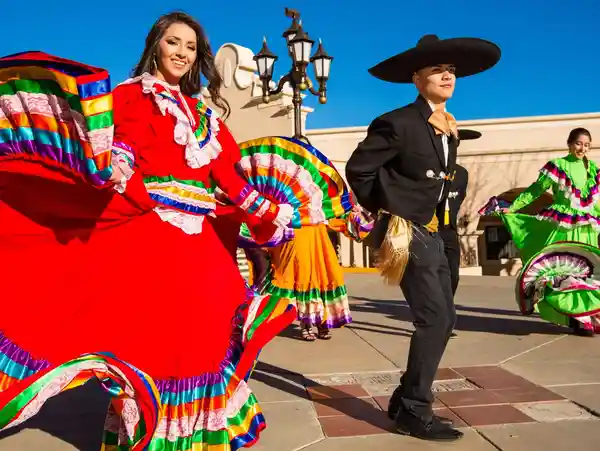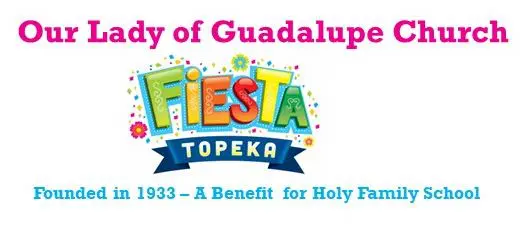Food & Entertainment
Fiesta Food
For generations, the fiesta has been known for its authentic Mexican food offerings. Food sales begin at 4 p.m. every day and continue until the food is sold out. The anticipation of homemade enchiladas, tamales, burritos, tostadas, and tacos at the fiesta keeps people flocking to the church grounds well into the evening
It is not unusual to sell over 10,000 items a night. Bringing our food to you includes months of careful and tradition-filled preparations—from the spices used and recipes followed to the hundreds of volunteers coordinated—we know Mexican food!
The Cursillo and other OLG Church-sponsored food stands in the midway/street area of the Fiesta also offer a variety of delicious Mexican food. You can tell it is obviously a fan favorite by looking at the long lines!
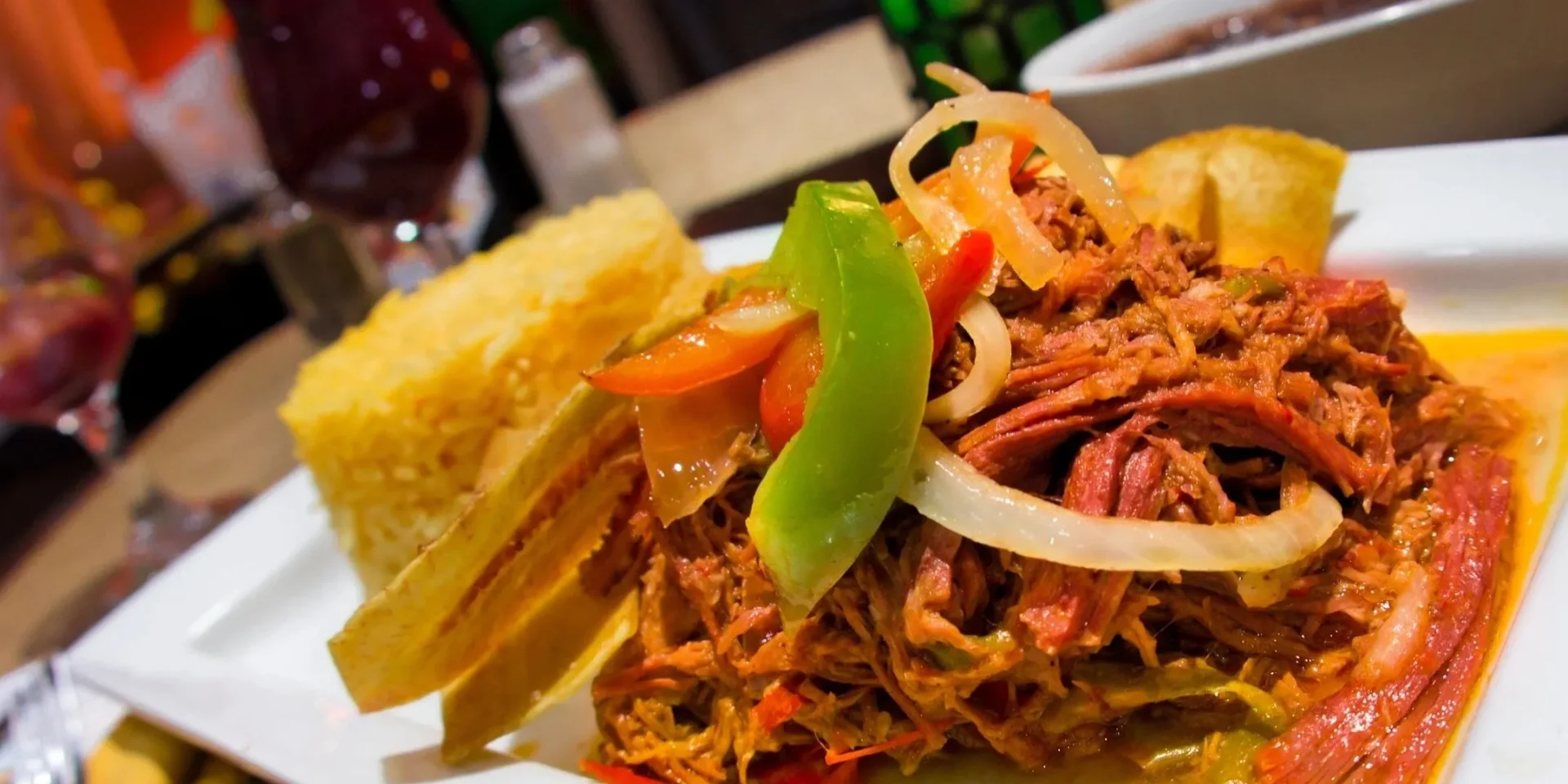
Fiesta Topeka also offers an air-conditioned eating area inside the Marlo Cuevas-Balandran Activity Center! So come over to our neighborhood and bring your appetite. In our culture, welcoming someone into our home means providing a great meal. Fiesta Topeka will leave you coming back for more!
Food prices and daily specials are to be announced
Carnival Food
Throughout the years, we have expanded food and beverage selections. Roasted corn, funnel cakes, hamburgers, brats, beer, lemonade, taco salads, margaritas, homemade desserts, and the list goes on and on. There is truly something for everyone!
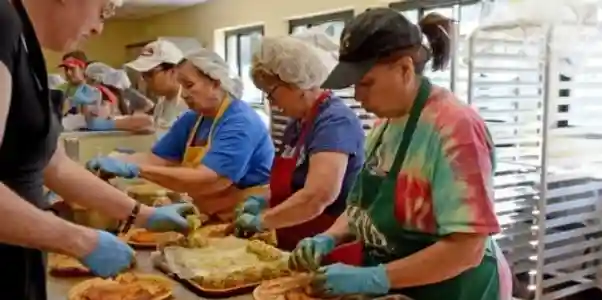
Entertainment
Latino Music Primer
Salsa
Salsa is a term of unclear origin that emerged and became popular in New York in the late 1960s. It has remained controversial since. For some, salsa is nothing more than a marketing handle for Afro-Cuban music as updated and reinterpreted by Latinos in New York.
Others hear it as a distinctive New York-Caribbean style, pointing out the grittier sound and the pan-Latin elements (e.g., Puerto Rican, Panamanian and Dominican as well as Afro-Cuban), along with R&B and jazz influences.
Merengue
While there are similarly named dances in other countries, this merengue, fast-paced music danced in a tight two-step is the national dance of the Dominican Republic.
Born in the Dominican countryside in the 19th century of African and European traditions, merengue was traditionally played by small groups featuring an accordion, güiro (metal scraper), and the two-headed Tambora drum. It became enormously popular in the 1980s, played by brassy, big band-like orchestras.
Traditional
The Latin GRAMMY’s "Traditional" field celebrates classic Creole styles, and the Cuban son is an essential, subtle blending of African and European elements developed in the island's Oriente (Eastern) province.
Rich and malleable, a son is to Cuban popular music what blues is to Afro-American popular music. Much of what is known as salsa, for example, is based on son.
Cumbia
Cumbia, sweetly syncopated dance music from the Atlantic coast of Colombia, is a classic example of the Creole fusion of indigenous, European, and African cultural elements in the Americas. The original cumbia featured percussion and voice, but as it evolved, instruments were added.
By the time it reached Colombia's urban centers in the 1940s, it was played by large dance orchestras. Cumbia has reached far and wide but has been especially influential in Mexico and Central America.
Ranchera
The dramatic ranchera, which emerged during the Mexican Revolution, is considered by many the country's quintessential popular music genre. Sung to different beats, including the waltz and the bolero, its lyrics traditionally celebrate rural life, talk about unrequited love and tell of the struggles of Mexico's Everyman.
Tejano/conjunto and norteño acts favor rancheras with romantic themes played to a polka beat. Mariachis and grupos prefer the gentler boleros and waltzes.
Banda
Banda, literally "band" in Spanish, generally refers to the large brass-heavy ensembles that first appeared in the northern Mexican state of Sinaloa in the early 20th century.
Early banda featured trumpets, trombones, tubas, and percussion instruments, but no lead singer. The contemporary banda, although it still features a horn section, often includes keyboards and electric bass.
Banda music exploded in the '90s due to the rise of la quebradita, a fast dance that incorporates moves from polka, rock and roll, and cumbia.
Grupero
The term "grupo," which literally refers to a band of musicians, in recent years has come to denote keyboard-driven romantic pop bands with members who share equal billing. Grupo music is referred to as "onda grupera."
Tejano
Tejano, Spanish for "Texan," is a hybrid of traditional Mexican rancheras, polkas, and cumbias infused with elements of country, blues, and pop.
Bandleader and saxophonist Isidro "El Indio" López are credited with creating modern Tejano music in the late 1950s by bringing together the sounds of the big band Tejano orchestra and the accordion-centered conjunto.
By the '90s, Tejano had blossomed into many sub-genres, including Tejano/pop, Tejano/R&B, and Tejano/country.
Conjunto
Conjunto is a unique Texas-based music tradition born in the 19th century that continues to evolve and thrive today.
Conjunto, like jazz, blues, and rock and roll, is a distinctly American musical genre that has had a major impact on the Mexican American community of the United States, as well as reviving interest in the accordion, and is gaining fans around the world.
Accordion-driven conjunto is its own culture, fans, and followers and plays an integral and vital role in many communities. It is dramatic, vibrant, and sensual - far from traditional! Flaco Jimenez is an example of the conjunto sound.
Norteño
Norteño, Spanish for "northern," is a genre rooted in rural folk music but enriched by many elements from the music of German and Czech immigrants.
A norteño band typically features an accordion and a bajo sexto (a 12-string bass guitar), but modern groups such as Los Tigres del Norte and Bronco also include the electric bass, sax, and keyboards.
The definitions below are courtesy of www.latinbayarea.com
Salsa
Salsa is a term of unclear origin that emerged and became popular in New York in the late 1960s. It has remained controversial since. For some, salsa is nothing more than a marketing handle for Afro-Cuban music as updated and reinterpreted by Latinos in New York.
Others hear it as a distinctive New York-Caribbean style, pointing out the grittier sound and the pan-Latin elements (e.g., Puerto Rican, Panamanian and Dominican as well as Afro-Cuban), along with R&B and jazz influences.
Merengue
While there are similarly named dances in other countries, this merengue, fast-paced music danced in a tight two-step is the national dance of the Dominican Republic.
Born in the Dominican countryside in the 19th century of African and European traditions, merengue was traditionally played by small groups featuring an accordion, güiro (metal scraper), and the two-headed Tambora drum. It became enormously popular in the 1980s, played by brassy, big band-like orchestras.
Traditional
The Latin GRAMMY’s "Traditional" field celebrates classic Creole styles, and the Cuban son is an essential, subtle blending of African and European elements developed in the island's Oriente (Eastern) province.
Rich and malleable, a son is to Cuban popular music what blues is to Afro-American popular music. Much of what is known as salsa, for example, is based on son.
Cumbia
Cumbia, sweetly syncopated dance music from the Atlantic coast of Colombia, is a classic example of the Creole fusion of indigenous, European, and African cultural elements in the Americas. The original cumbia featured percussion and voice, but as it evolved, instruments were added.
By the time it reached Colombia's urban centers in the 1940s, it was played by large dance orchestras. Cumbia has reached far and wide but has been especially influential in Mexico and Central America.
Ranchera
The dramatic ranchera, which emerged during the Mexican Revolution, is considered by many the country's quintessential popular music genre. Sung to different beats, including the waltz and the bolero, its lyrics traditionally celebrate rural life, talk about unrequited love and tell of the struggles of Mexico's Everyman.
Tejano/conjunto and norteño acts favor rancheras with romantic themes played to a polka beat. Mariachis and grupos prefer the gentler boleros and waltzes.
Banda
Banda, literally "band" in Spanish, generally refers to the large brass-heavy ensembles that first appeared in the northern Mexican state of Sinaloa in the early 20th century.
Early banda featured trumpets, trombones, tubas, and percussion instruments, but no lead singer. The contemporary banda, although it still features a horn section, often includes keyboards and electric bass.
Banda music exploded in the '90s due to the rise of la quebradita, a fast dance that incorporates moves from polka, rock and roll, and cumbia.
Grupero
The term "grupo," which literally refers to a band of musicians, in recent years has come to denote keyboard-driven romantic pop bands with members who share equal billing. Grupo music is referred to as "onda grupera."
Tejano
Tejano, Spanish for "Texan," is a hybrid of traditional Mexican rancheras, polkas, and cumbias infused with elements of country, blues, and pop.
Bandleader and saxophonist Isidro "El Indio" López are credited with creating modern Tejano music in the late 1950s by bringing together the sounds of the big band Tejano orchestra and the accordion-centered conjunto.
By the '90s, Tejano had blossomed into many sub-genres, including Tejano/pop, Tejano/R&B, and Tejano/country.
Conjunto
Conjunto is a unique Texas-based music tradition born in the 19th century that continues to evolve and thrive today.
Conjunto, like jazz, blues, and rock and roll, is a distinctly American musical genre that has had a major impact on the Mexican American community of the United States, as well as reviving interest in the accordion, and is gaining fans around the world.
Accordion-driven conjunto is its own culture, fans, and followers and plays an integral and vital role in many communities. It is dramatic, vibrant, and sensual - far from traditional! Flaco Jimenez is an example of the conjunto sound.
Norteño
Norteño, Spanish for "northern," is a genre rooted in rural folk music but enriched by many elements from the music of German and Czech immigrants.
A norteño band typically features an accordion and a bajo sexto (a 12-string bass guitar), but modern groups such as Los Tigres del Norte and Bronco also include the electric bass, sax, and keyboards.
The definitions below are courtesy of www.latinbayarea.com
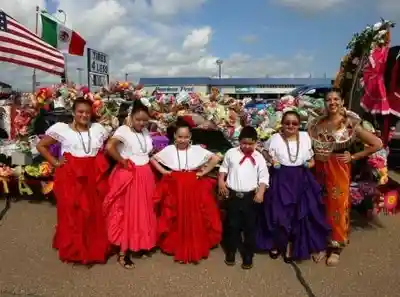
Fiesta Topeka Entertainment
Music and dance have always been integral parts of Fiesta.
The Latino culture and Fiesta Topeka share with the community the sights and sounds of banda, norteño, salsa, and English mainstream acts while still staying true to the roots of Fiesta’s long past with mariachi and Tejano groups that are in an ever-present and enduring part of our programs as well.
The sights and sounds of Fiesta Topeka await you!
Fiesta Entertainment
All entertainment is subject to change without notice.
Entertainment Talent & Headliners
We plan to have an exciting program for 2023 featuring a variety of talent, musical genres, and of course the traditional Fiesta Mexican dancers and music!!!
Click HERE for the full lineup.
